Lesson 114
We will explain Repetitive Diving
By the end of this section, I should be able to answer these questions:
1. What is residual nitrogen? What is a repetitive dive?
2. How does residual nitrogen affect the no stop limits on a repetitive dive?
3. What is a surface interval?
4. What happens to the dissolved nitrogen in my body during a surface interval?
5. How does my dive computer calculate repetitive dives?
6. Why is it important that I dive with the same computer on every dive I make on a given day and not turn my computer off between dives?
7. How do dive tables address repetitive diving?
Repetitive Diving
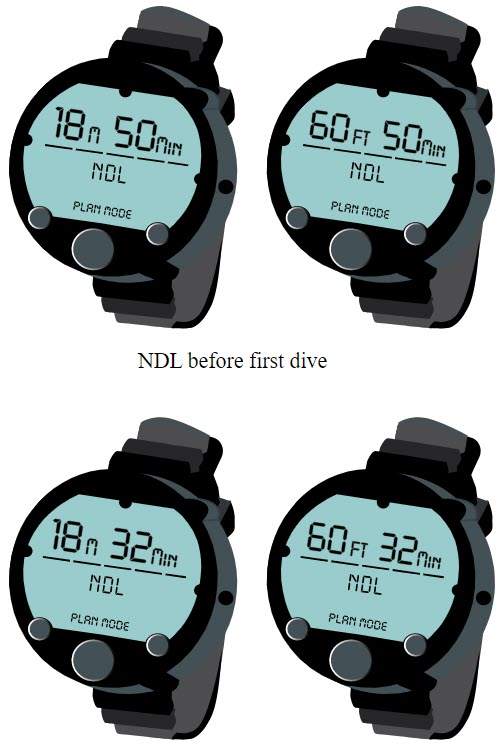
If you scroll your computer’s no stop times after you’ve made a dive, you’ll see that the times are shorter than they were before the dive. This is because after a dive, you still have excess nitrogen dissolved in your body tissues. It takes quite a few hours after surfacing for all the excess nitrogen to dissolve out of your body. In theory, it can take longer than a day.
Residual Nitrogen
The nitrogen left in your body after a dive is called residual nitrogen. Residual nitrogen is important, because it shortens your no stop limits if you dive again. A dive made while you still have residual nitrogen is called a repetitive dive. When you make a repetitive dive, your dive computer gives you shorter no stop times to account for the nitrogen still in your body. If you stay at the surface long enough (usually 12 hours or more) for your body nitrogen levels to return to normal, the next dive is no longer considered a repetitive dive. You’ll hear it called a “first” dive or a “clean” dive.
Surface Intervals
A surface interval is the time you spend at the surface between two dives. During a surface interval, the residual nitrogen in your body declines as it dissolves out of your tissues and leaves your body.
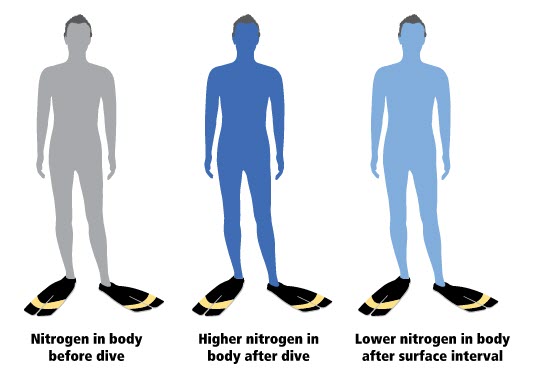
This means that the longer your surface interval is, the more no stop time you have on a repetitive dive, all else being the same. And, as just stated, if your surface interval is long enough (12 or more hours), residual nitrogen is zero (for practical purposes), so the next dive is a first dive.
Calculating Repetitive Dives
Your dive computer calculates repetitive dives the same way it calculates your first dive. Starting with the first dive, your computer tracks your depths and times. During the dive, it displays your remaining no stop time at your current depth.
After the dive, your computer continues to calculate. It “remembers” your residual nitrogen from the first dive. It calculates your time at the surface and how much theoretical residual nitrogen dissolves out of your body. If you scroll your no stop limits from time to time as you and your buddies relax during a surface interval, you will see no stop limits gradually lengthen as you spend time on the surface.
When you dive again, your computer “knows” the theoretical residual nitrogen remaining in your tissues. Your computer shortens your no stop times to account for the residual nitrogen. You will notice that at each depth, you have less no stop time than you did on your first dive. An important point is that a first dive deep enough to have been limited by your air supply might be limited by your no stop time as a repetitive dive.
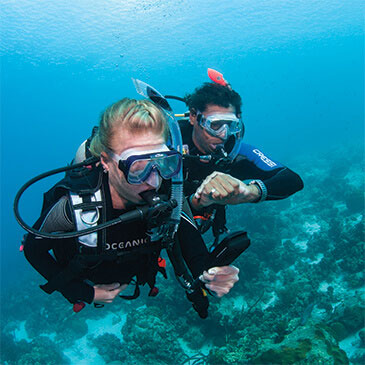
*Because your dive computer tracks your personal theoretical nitrogen levels continuously during all your dives and all your surface intervals, you must use the same computer the entire diving day, on all dives, and not share it with another diver.
This is necessary in providing appropriate no stop times over multiple dives and surface intervals. Do not make a repetitive dive without the same computer you used on your previous dive or dives. If you were to use a different computer, it wouldn’t have your previous dive information and your no stop times would be inaccurate. This could significantly increase the risk of decompression sickness.
Your dive computer continues to calculate the theoretical nitrogen in your body tissues until your surface interval has been long enough that the nitrogen levels have returned to normal (for practical purposes). During a day of diving, never turn off your dive computer (or remove the batteries), because it may lose all your repetitive dive information. This would make repetitive dive calculations inaccurate. Most modern computers won’t let you turn them off for this reason, but some older models allowed it. Your computer may go to “sleep” to save power during a long surface interval, but it is still calculating. Follow any additional manufacturer recommendations regarding the use of a computer for repetitive diving.
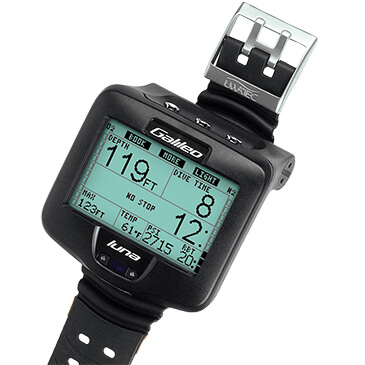
Most modern computers also won’t let you start diving with them if the battery power is too low. See the manufacturer literature/website and/or your instructor about powering off, sleep mode and battery replacement for your computer should it become necessary (batteries usually last a year or more).
When your computer calculates that nitrogen levels have returned to normal, it will turn itself off or go to sleep. Many dive computers – particularly those that are also watches – never turn off or go to sleep. This is normal. See your instructor if you have questions about the specifics for your dive computer..
Repetitive Diving with Tables
The RDP and other dive tables address repetitive diving by using three tables. The first table assigns a Pressure Group (as a letter) that represents the theoretical amount of residual nitrogen from your dive time and depth.
The second table gives you credit for nitrogen leaving your body during a surface interval. Taking the Pressure Group from the previous table, it assigns a new Pressure Group based on your surface interval time. This Pressure Group represents having less theoretical residual nitrogen in the body.
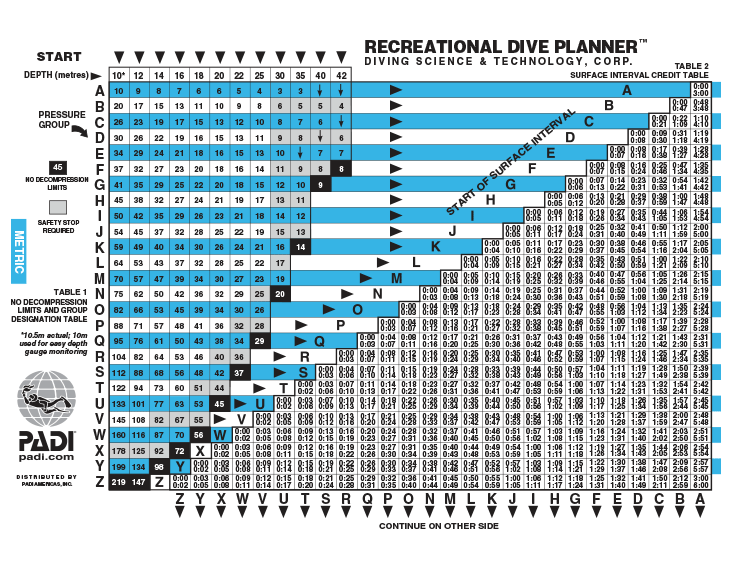
The third table shows you no stop times for each depth adjusted for your Pressure Group at the start of the dive..


The eRDPML uses these tables, but manages them electronically for user convenience. The RDP Table and eRDPML include detailed study guides on how to use them.
knowledge review and quiz
Comments

I'll take you diving!
Copyright © Larry Wedgewood Scuba Instruction All Rights Reserved








